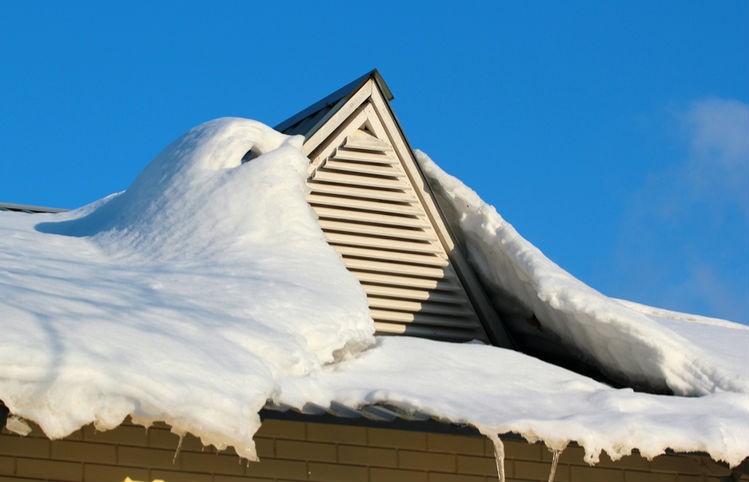[ad_1]
At HVAC.com, our writers create solutions that put you in control of your HVAC system. Our product reviews and recommendations are researched and supported by real buyers and industry experts, not dictated by our partners.
During the winter months, home maintenance needs are different than when it’s warm outside. Roof ventilation is a concern for many homeowners, especially those concerned with energy and heat conservation. Should covering your roof vents be on your winter home maintenance to-do list? Read on to find out.
Should I cover my roof vents in the winter?
roof ventilation important throughout the year. During the winter, your home’s roof vents allow moisture to leave the attic space, preventing the growth of mold and mildew that can occur even during this dry period. Roof vents should be left completely open during the winter – don’t cover them!

During the winter, roof ventilation keeps temperatures even. Closing the vents makes the attic space too warm and dry—dangerous conditions for mold as well as pests. Keeping roof vents open keeps the roof at an even temperature to prevent damaging ice dams, where water backs up under the shingles, freezing and causing damage to roof and structural components as well as gutters.
When the attic gets too warm due to the closed vents, the snow and ice on the roof melts easily. This causes the water to flow freely between the shingles and down the gutters. Uneven ceiling temperatures due to blocked vents lead to re-freezing at an alarming rate.
Want to run a system scan just to be safe?
It’s okay for the attic to be cold in the winter because the roof vents are open. An attic with good air-sealing will not cause your home to get colder or use extra energy for heating. If heating energy is making its way into your attic, the way to solve this problem is by further insulating the attic rather than sealing up the roof vents.
Cleaning roof vents in winter
Severe winter storms cause snow and ice to build up which can affect the roof’s ventilation capacity to allow free-flowing air to move through the attic. Ice buildup also affects the roof structure, and is dangerous when it becomes heavy. It may be necessary to clean roof vents after heavy winter rains.
To do this safely, it is best to hire a snow removal contractor. You should not attempt to climb onto an unsafe surface covered in snow and ice. A licensed and insured contractor will use appropriate tools to mitigate snow and ice build-up while protecting roof vents from damage.
roof ventilation
Ensure that your roof vents work properly during the winter by doing some easy maintenance in the fall.
- Clean the bottom of the frieze to remove impurities
- Clean the attic fan to remove debris
- Remove sticks, leaves, and other materials away from exhaust vents on the roof
These steps will allow air to enter and exit the attic, while maintaining proper roof ventilation throughout the winter. Attic mold becomes a serious and costly problem – prevent moisture buildup with simple roof vent maintenance.
Find roof ventilation instructions at HVAC.com
HVAC contractors have the roof ventilation solutions your home needs to maintain proper attic temperatures and air flow all winter long. Get the help you need by finding a local licensed HVAC company.
Make an appointment with a local HVAC technician.
[ad_2]
Source link
#cover #roof #vents #winter
